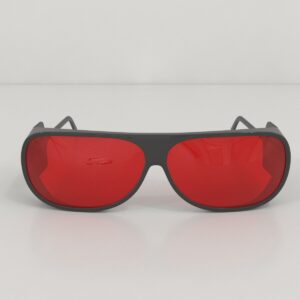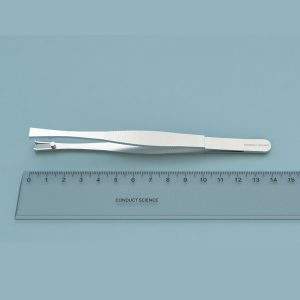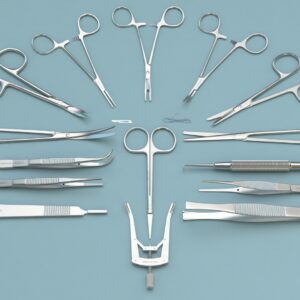$1,490.00
The Bumblebee spatial reorientation device consists of a rectangular structure made from green acrylic, covered with an insect net. It features four wooden L-shaped blocks positioned in each corner, allowing internal access to the enclosure.
Originally introduced by Sovrano et al., this apparatus is designed to assess the spatial reorientation capabilities of bumblebees (Bombus terrestris). It evaluates spatial disorientation through passive rotations in both clockwise and counterclockwise directions. The challenge involves bees locating one of the four exit holes situated at the corners of the rectangular enclosure.

MazeEngineers empowers preclinical neuroscience research with meticulously designed, customizable behavioral apparatuses. From manual classic mazes to fully automated smart systems, we provide the tools scientists need to capture high-quality, reproducible data for studies on learning, memory, anxiety, and depression.


bool(false)

Features |
Rectangular Enclosure Length: 20 cm |
Rectangular Enclosure Width: 9.6 cm |
Rectangular Enclosure Height: 8 cm |
Insect Net: 21cm x 10 cm x 3 cm |
4 Corner Blocks: 4.5cm height; 2.8cm x 2.8cm |

The spatial reorientation test is primarily employed to evaluate an animal’s capacity to reorient itself within an environment using available navigational and geometrical cues. These cues typically include the metric properties of surfaces (e.g., long or short walls) and the animal’s sense of directional orientation.
This apparatus serves as a valuable tool for investigating the navigational and sensory mechanisms used by invertebrates to reorient themselves. It also facilitates the exploration of differences in reorientation abilities between vertebrates and invertebrates following intentional passive disorientation.
Constructed as a rectangular enclosure surrounded by walls, each corner of the spatial reorientation test apparatus conceals a hidden escape goal that subjects must locate without additional landmark cues.
The spatial reorientation apparatus is instrumental in studying how animals navigate and distinguish between geometrically equivalent locations, both with and without additional featural cues. This research sheds light on how animals respond to featural cues placed at varying distances from the goal across different trial conditions.
Invertebrates typically use memorized views acquired from previous encounters at the goal location to relocate it. Therefore, the spatial reorientation study also contributes significantly to understanding the diverse view-based matching strategies employed by insects for navigation.
The spatial reorientation test apparatus comprises a rectangular green plastic enclosure measuring approximately 20 cm in length and 9.6 cm in width. Its walls, standing at 8 cm tall, can be internally lined with colored cardboard to introduce featural cues during experimental trials.
Topping the enclosure is a rectangular insect net, measuring approximately 21 cm in length and 10.2 cm in width, designed to prevent insects from escaping during the trials. Each corner of the enclosure features an L-shaped acrylic block, with a base measuring 2.8 x 2.8 cm and standing about 4.5 cm high. These blocks house escape goals, identified by openings approximately 1.5 cm in diameter.
The entire apparatus is enclosed within a larger polyester insect net, measuring 60 cm in length, width, and height. Food is strategically placed at random locations inside the larger net to motivate subjects to locate the escape goals across repeated trials.
To initiate the experiment, the bumblebee is positioned at the center of the apparatus using a small opaque container measuring approximately 7 cm high and 5.5 cm in diameter. All escape goals except one (positive and reinforced) are closed off, allowing the subject to exit the enclosure and access food within the larger net. Attempts by the bumblebee to escape from all four corners are documented until it locates the correct exit and leaves the enclosure.
The experiment comprises two training sessions per day, each session consisting of 8 trials with an interval of approximately 40 minutes between them. During each trial, the bumblebee has a maximum of 20 minutes to locate the escape goal; if unsuccessful, the bumblebee is disoriented and another trial begins. Upon successfully finding the correct goal on the first attempt, the bumblebee is rewarded with 10 minutes of positive reinforcement, during which it can freely move and feed itself within the larger enclosure.
Prior to each trial, the bumblebee is disoriented by placing it in the opaque container and gently rotating it 360 degrees in both clockwise and anticlockwise directions. Additionally, the apparatus is rotated 90 degrees clockwise to prevent the subject from relying on external cues to locate the escape goal.
An alternative version of the spatial reorientation test involves covering the walls of the apparatus with cardboard, either colored or white, to provide featural cues to the subjects during the trials.
Spatial reorientation apparatus is highly supportive in investigating the reorientation ability exhibit by bumblebees with or without navigational cues. The apparatus conveniently allows the introduction of colored cardboards in between the trials, which adds featural information for the subjects to locate the goal.
The spatial reorientation apparatus is beneficial in investigating the view based matching mechanism adopted by bumblebees and comparing it with other insects
The original version of the dominance test tube was initially operated manually (G. Lindzey et al., 1961).
Numerous modifications have since been implemented on the test tube, including a notable enhancement by Wouter E. van den Berg et al. in 2014.
Their upgraded apparatus features an automated setup: a transparent fiberglass tube measuring approximately 50 cm in length and 2.5 cm in internal diameter. This tube is connected to a clear fiberglass box measuring approximately 12 x 8 cm on each side, with clear fiberglass doors for access. The box can be opened or closed manually using a lid.
Located at the rear end of the box, about 1 cm above its base, is an air valve. Additionally, an opaque fiberglass divider is positioned in the center.
The apparatus is equipped with automated mechanisms: each air valve activation and door positioning is controlled independently and in real-time using infrared photodetectors for precise automated tracking.
The relationship between the bumblebees that located the escape goal in the first attempt versus the ones that made incorrect attempts, when the ‘Featural Cues’ are absent.
The spatial reorientation apparatus provides valuable insights into the navigational behaviors of bumblebees. Its compact size enables subjects to navigate freely within the enclosure and locate the escape hole. The transparent net covering the entire apparatus facilitates easy observation of the subject’s movements across all corners.
This apparatus is versatile and offers practical utility for various experiments aimed at exploring differences and similarities in how invertebrates reorient themselves within their environment.
Valeria Anna Sovrano, Elisa Rigosi, Giorgio Vallortigara. (2012). Spatial Reorientation by Geometry in Bumblebees. PLoS One; 7(5): e37449.
There are no questions yet. Be the first to ask a question about this product.